
Italian painter
Giovanni Antonio Canal [Canaletto]
was born,
October 18, 1697
in Venice
❦
Canaletto , son of the theatrical scene painter Bernardo Canal, hence his mononym Canaletto (“little Canal”), was considered important member of the 18th-century Venetian school. He painted mainly city views or vedute*, of Venice, Rome, and London, and also imaginary views (referred to as capricci).
Canaletto was also a draughtsman and printmaker, producing various series of etchings including one for Consul Smith entitled Vedute altre prese dai luoghi altre ideate. From 1746 to 1756 he worked in England where he depicted views of the countryside and of London [Warwick Castle , Alnwick Castle].
Thanks to the British merchant and connoisseur Joseph “Consul” Smith, whose large collection of Canaletto’s works was sold to King George III in 1762, he was very successful in England.
Much of Canaletto’s early artwork was painted “from nature”, differing from the then customary practice of completing paintings in the studio. Some of his later works do revert to this custom.
His paintings are always notable for their accuracy: he recorded the seasonal submerging of Venice in water and ice. Canaletto learned the basic principles of painting by executing large theatrical sets [a trade that he learned from his father Bernardo Canal]. In 1719 he and his father travelled to Rome where Canaletto encountered the work of Giovanni Paolo Panini who specialised in classical ruins and panoramic urban views. The work of Luca Carlevarijs and Marco Ricci also played an important role in the development of Canaletto’s style. On his return to Venice in 1720 he registered in the painters’ guild and appears in their records until 1767.
He found that providing formulaic paintings for tourists was very lucrative. These, still highly skilled works, were produced by him often in collaboration with an organised workshop. They usually record the lavish Venetian public ceremonies, as in ‘Regatta on the Grand Canal’.
Canaletto’s first known views of Venice date to the 1720s and were commissions from Stefano Conti and the Prince of Liechtenstein. Much of Canaletto’s oeuvre was painted for foreign collectors who acquired his works as souvenirs while on the Grand Tour.
*Veduta refers to a highly detailed -usually large-scale painting- of city views
**Capriccio refers to a highly detailed painting of imaginary city views
So here’s a glimpse of his work [no quotes…]



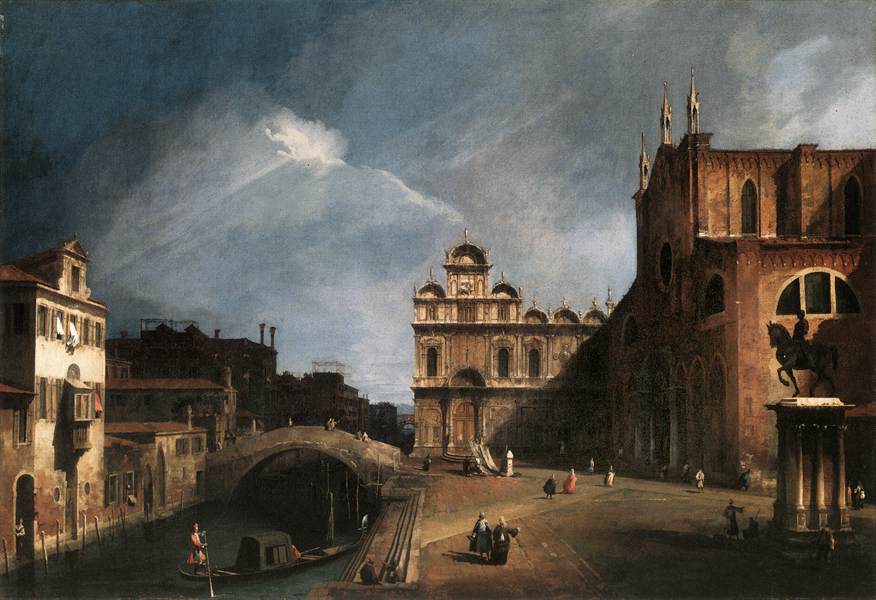

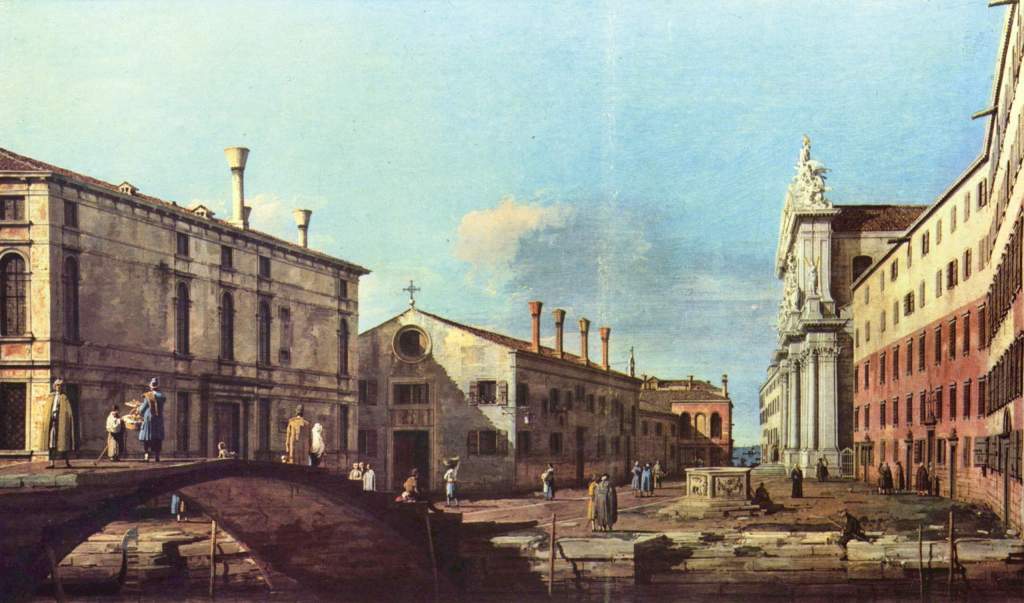
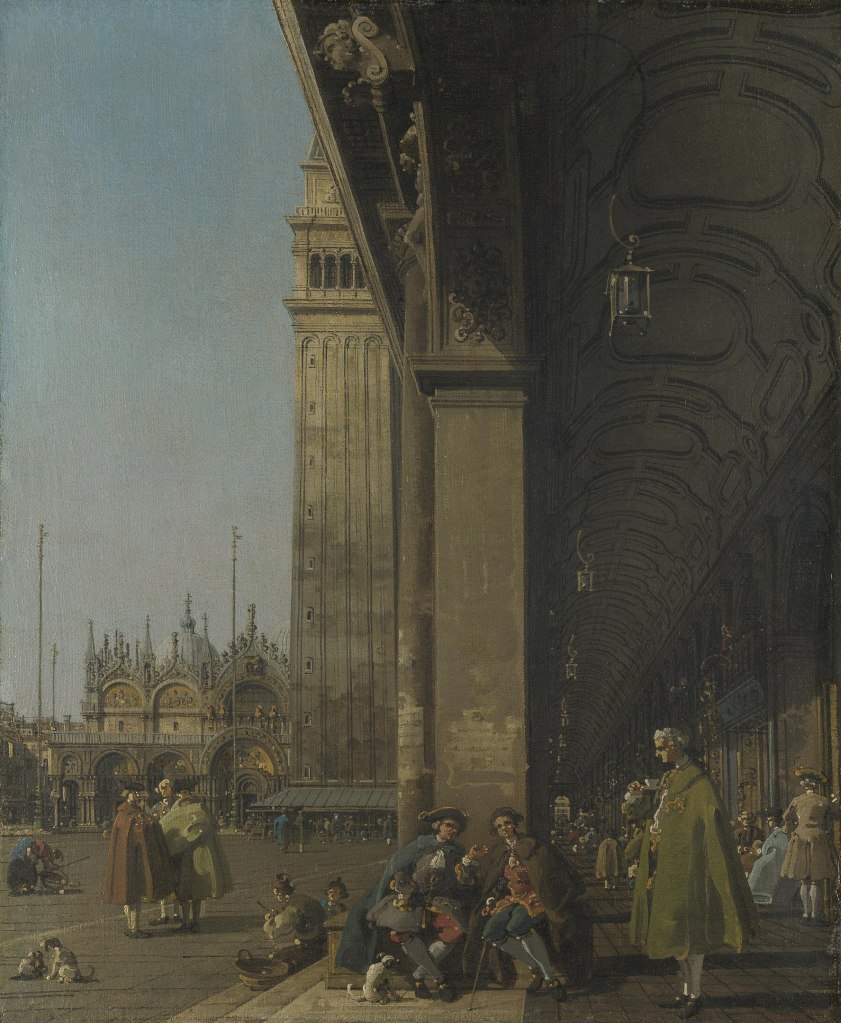




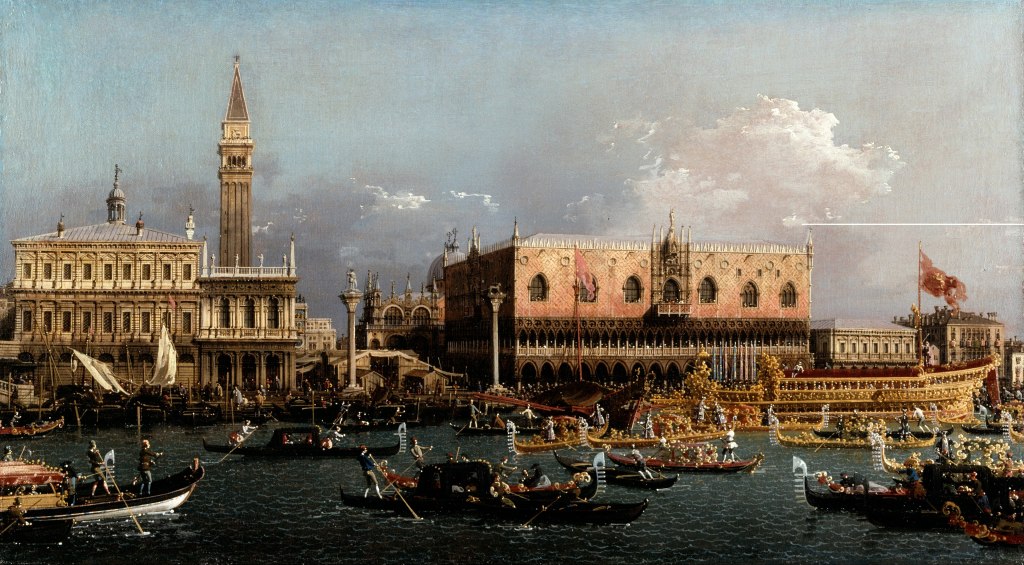














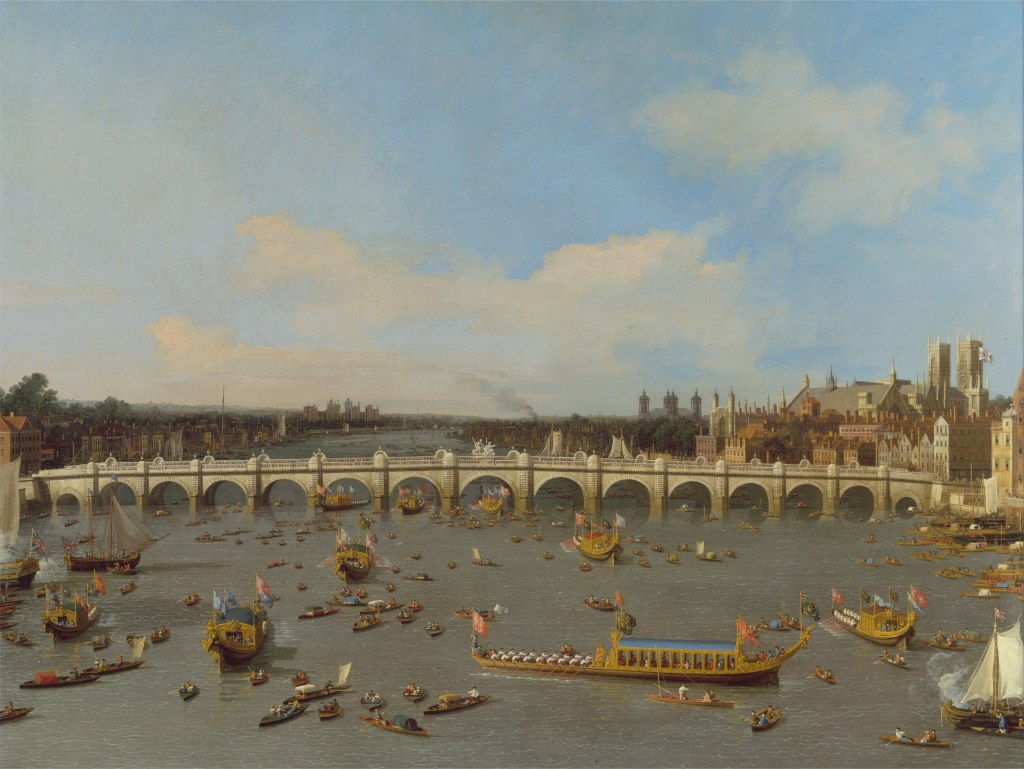




The Grand Canal
click on the drawings to see in full view

The Entrance to the Grand Canal, Venice 
Bemberg Fondation Toulouse – Le Grand Canal à Sainte Lucie 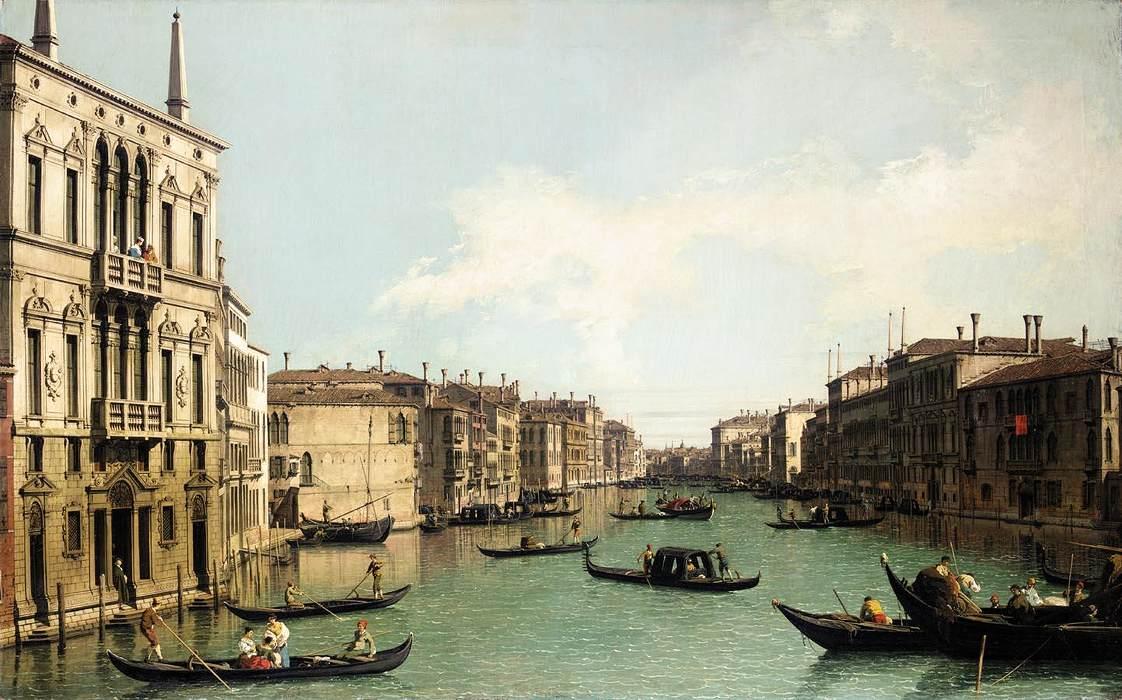
The Grand Canal, Looking North-East from Palazzo Balbi to the Rialto Bridge 
The Grand Canal, Venice, Looking North East from the Palazzo Balbi to the Rialto Bridge 
The Grand Canal Looking North from the Rialto 
Grand Canal – Looking from Palazzo Balbi 
View of Santa Maria della Salute from the entrance of the Great Canal 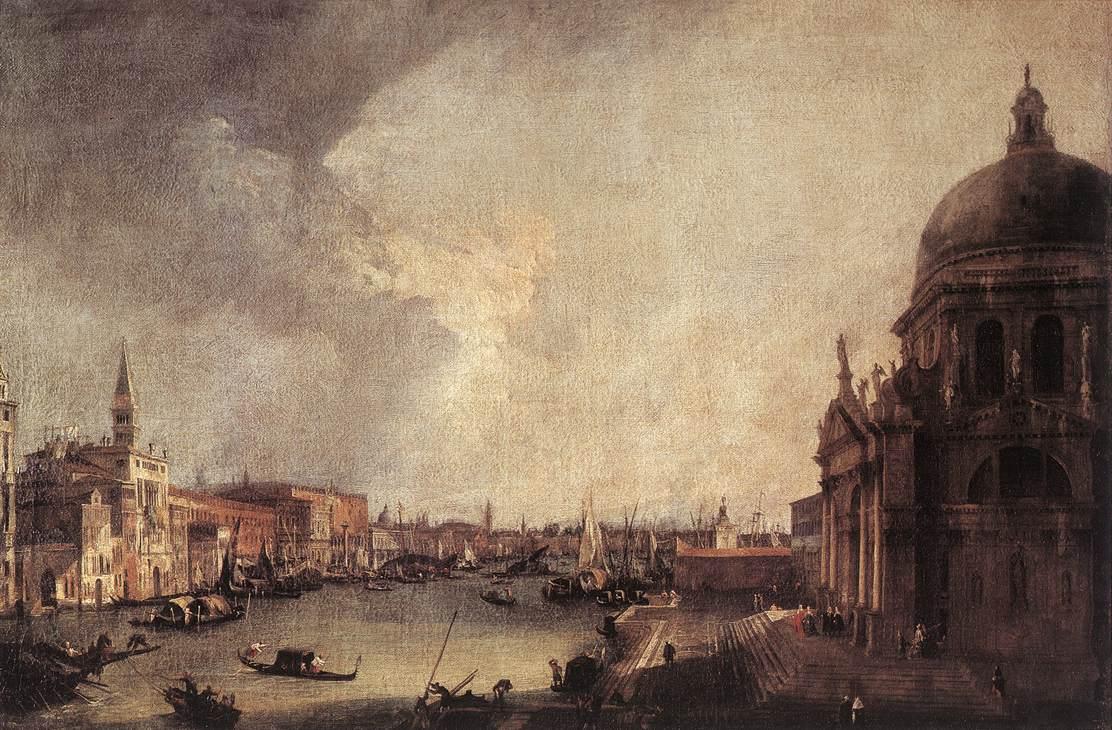
Entrance to the Grand Canal – Looking East 
Grand Canal – Looking North-East toward the Rialto Bridge (detail) 
Grand Canal – Looking North from Near the Rialto Bridge 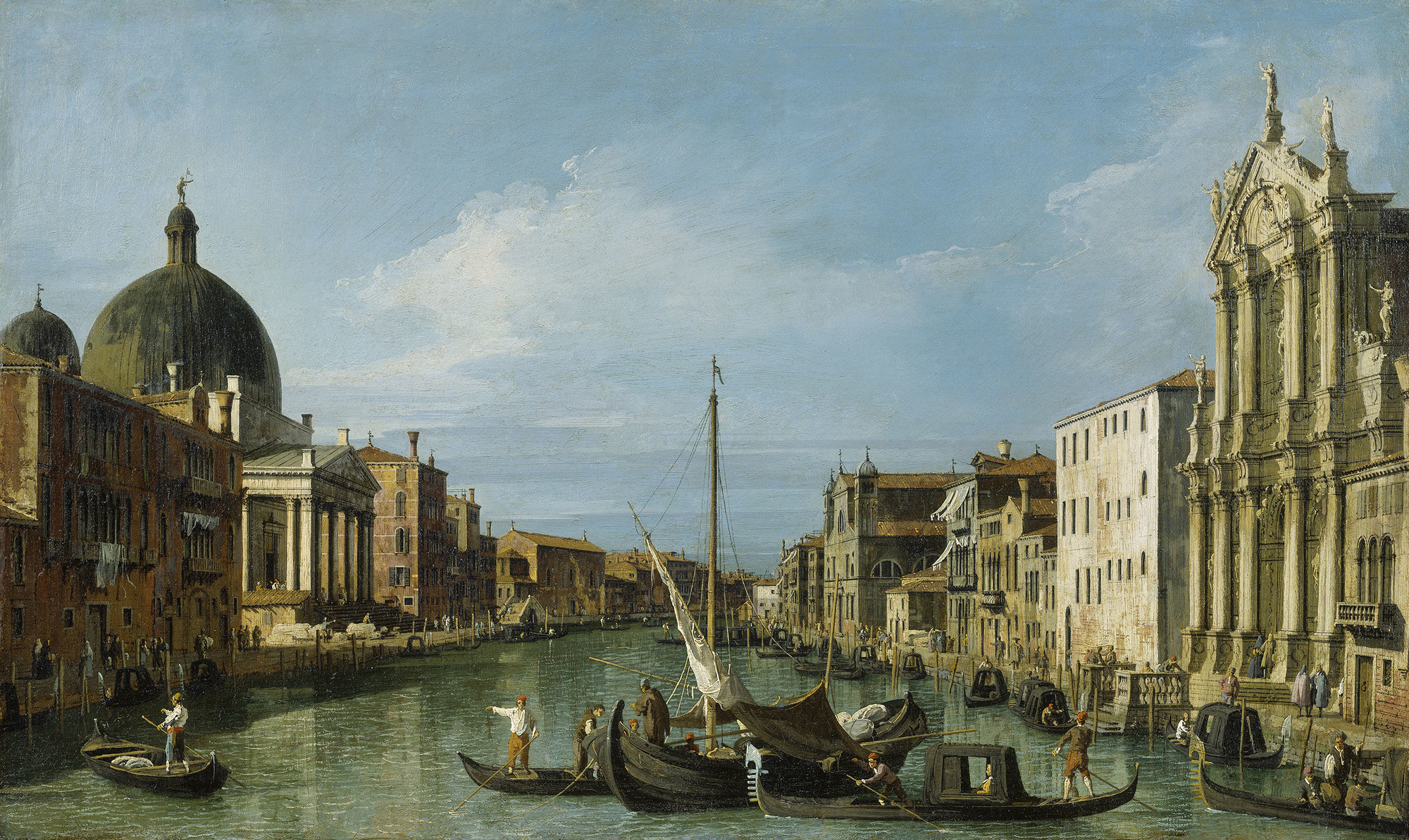
The Grand Canal with the Scalzi and S. Simeone Piccolo 
The Grand Canal near Santa Maria della Carità 
The Grand Canal looking south-west from the Rialto to Ca’ Foscari 
Ca’ Rezzonico – Canal Grande da Palazzo Balbi a Rialto 
The Grand Canal in Venice with the Palazzo Corner Ca’Grande 
Grand Canal, Looking East from the Campo San Vio 
The Grand Canal near the Rialto Bridge, Venice
Etchings – Drawings
click on the drawings to see in full view

Doge of Venice Departing for the Lido 
The Piazzetta Looking towards the Torre dell’Orologio 
Piazzetta [Piazza San Marco] 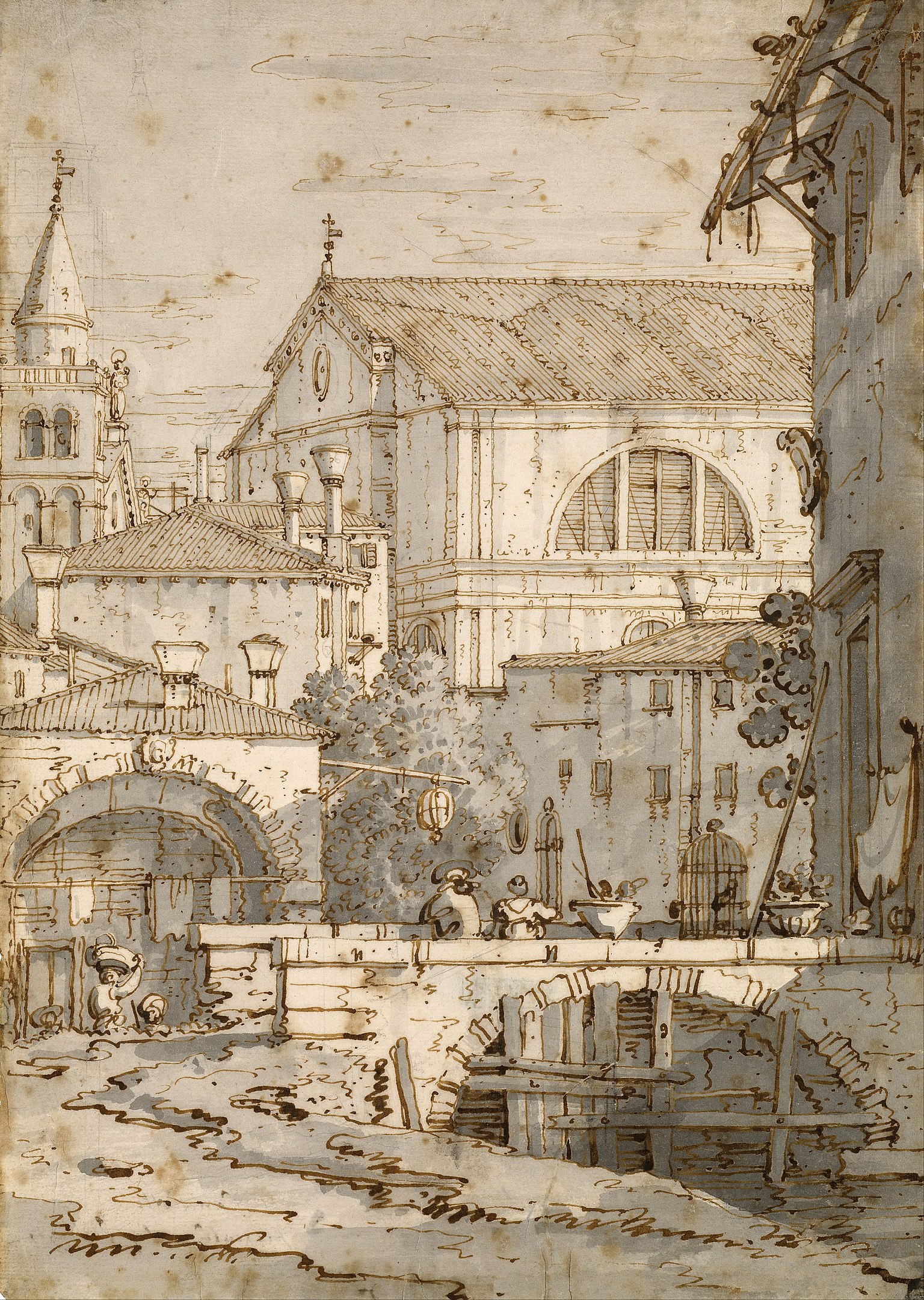
Architectural Capriccio 
Campo San Giacomo di Rialto, Venice, pen and brown ink and grey wash 
View through a Baroque Colonnade into a Garden 
San Marco – the Crossing and North Transept, with Musicians Singing 
The portico with a lantern, from the series Vedute, c. 1740–1744, etching
❦

I have chosen music
by the German Baroque music composer
Johann Joachim Quantz (1697-1773)
flutist, flute maker and
born the same year as Canaletto
❦
Flute Concertos
Concerto in G minor QV 5:196 0:00
Concerto in D minor QV 5:86 16:49
Concerto in A minor OV 5:236 28:07
Concerto in G major OV 5:173 46:33
❦
Les Buffardins
Frank Theuns – flute
❦
❦
For more information on Canaletto:
https://www.canalettogallery.org/
https://en.wikipedia.org/wiki/Canaletto
https://www.nationalgallery.org.uk/artists/canaletto
https://www.nga.gov/collection/artist-info.1080.html
https://www.tate.org.uk/art/artists/canaletto-2302
https://www.metmuseum.org/art/collection/search/435839
https://www.wikiart.org/en/canaletto
https://www.museothyssen.org/en/collection/artists/canaletto


Thank goodness someone recorded the architecture of this time and place. What a perfect talent to do this. Of course I now see I got Canaletto confused with Caravaggio.
I thought Caravaggio painted these images of buildings. When you did your Caravaggio post, I was shocked. Live and learn!
I listened to every note of the Flute Concertos. Brilliant, and highly conducive to my creativity.
Marina, thank you so much!
xoxoxoxoxo 🎼❤️ xoxoxoxoxo 🎼❤️ xoxoxoxoxo 🎼❤️
And you’re not the only one! I confused them too and they differ as much as day and night!
Thank goodness indeed ! Amazing talent!
Happy you enjoyed the flute concerto too! Now I’m curious to see what is inspired!!! 😉
Thank YOU!!!!!
❤🤗❤🤗❤🤗❤🤗❤🤗❤🤗❤☀️❤
You confused them too!!!! It’s so great that you are doing this series!
I’m working on the next instalment of PBH and the Art Gowns Models! It’s more cheeky than ever. 1 more drawing, and Holly needs to pick a song! So, I’d say in about a week.
❤🤗❤🤗❤🤗❤🤗❤🤗❤🤗❤☀️❤
Oh, I’m looking forward to that!!!!! ❤️🤗😘🤗❤️🤗😘🤗❤️
Getting there! Still a good week 10 days, but getting there! Holly picked a song! xoxoxoxoxoxoxoxo
Great!!!!!!!!! 🤗🤗🤗🤗🤗🤗❤❤❤❤
I’ll be back! I need to listen, and look more closely!
xoxoxo
Meantime: hugs and tail wags!!! 🐾❤🤗😘❤🐾
I’m back… finally! Listening to the flute concertos as I type.
Hi!!!! Hope you enjoyed! 😘😘😘😘
Before TV we had..? But seriously, he was one of the first artists to turn me on to the idea of transcendence in art… although I was too young to really understand it that way. Grade 5, 6 or 7… we had a board game called “Masterpiece,” if I remember right. Canaletto’s “Regatta” was on one of the cards… and I’ll never forget it. A beginning, for me.
Sounds like a nice game for children… I wonder what the equivalent today is. If only children were exposed to art at very early ages….
https://magisterrex.files.wordpress.com/2010/04/blogmasterpieceusfront.jpg I’m the finky guy lifting up his finger! I guess that’s making a bid… Art auctions def. not in my league! 🙂
Ah ha ha ha haaaaaaaa!!!!!!!!!!!
Can you believe it? After posting that I wondered if using the word “finky” is now considered “abusive.” The Thought Police are getting to me… 😁😲
There will come a day when just a look will be offensive/abusive. In some cultures it is. As for the Thought Police… just round the corner!
…just to cheer you up a bit! 😂😂😂
Actually, there was a case in the 90s at the University of Ottawa where a prof was supposedly luring at a woman in a swimming pool…
😱
Thank God Earth is not the last stop. Some days I actually look forward to heaven… if I make it, that is! 😁
🤣😂😇
I think you might appreciate reading about this preschool teacher who does that very thing: https://jenniefitzkee.com/2021/04/05/music-and-the-art-show-part-1/
He is a gem and a hero! A super-teacher and a brilliant example of how teachers ought to be. Thank you for sharing this!
You’re most welcome, Marina!
EXCELLENT! Canaletto is in my post on the handful of Most Influential artists in my life and work. Great, Great Post!!!
Ah, so happy you enjoyed it! [I remember!] Thank you, my friend!
Hi Marina! Always Very Happy to see Great Masters’ Masterpieces! Take Care my Friend!
Thank you, my dear Nawfal! You too take care, my friend! Odd times to be around! 😉
Yeah, VERY VERY 1984’ISH ODD TYPE of Times.
Beyond Orwellian!
Yes, Agreed!
🙂
A wealth of fascinating architectural detail there!
✨☀️🙏🕉️♾️☮️🙏☀️✨
Well said, my friend! 🙏☀️🙏
Thank you for this amazing post. Giovanni Antonio Canal’s greatest gift was his ability to tell the story of his time so that we can imagine ourselves with him as he paints, each brushstroke bringing out new images. Without artists, we would not know exactly how people lived in the past – how they shopped, traveled or what they ate or drank. When I read your post (the second time around for me) I felt like I was entering a virtual art gallery. Fantastic!!
You are so right, my dear Rebecca. What a wonderful way of describing his work. I’m so very happy I walked with you this little virtual gallery. Thank you! Many hugs your way! xoxo
🤗🤗🤗
🤗😘🤗
Oh Wow… What a collection… What perspective, and precision …. If I were in an art gallery I would be standing in front of these paintings picking out details all day and marvelling at them.. From the window’s the people and their dress, to the added extras such as dogs sitting in the square … 😀 loved each and everyone….
Many thanks for sharing Marina… 🙂 ❤
Amazing isn’t it?!
So glad you enjoyed this Canaletto’s work! Many hugs your way! 🤗❤
🙂 (( hugs )) back 💖🙏
😘❤️🤗
Breathtakingly intricate and detailed art. A gorgeous tapestry! Thank you dear Marina, your displays and narrative are beyond compare. xoxoxo 😘
Amazing work… such detail!
Thank you so much my dear Holly! So glad you enjoyed it! ❤
❤️
🤗❣️🤗
Oh my … I like his style. I imagine that an in-person view of his work displays his wonderful detail. Have a wonderful Sunday and week ahead. Yamas!
Oh, yes it does!!! You too, my friend have a great week ahead! Yamas!